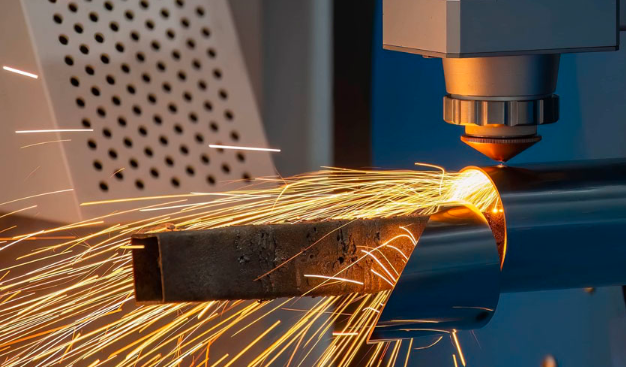Comprehensive Guide to CNC Steel Machining

Introduction
CNC (Computer Numerical Control) machining has significantly transformed the manufacturing landscape, enabling the precise and efficient production of complex parts. Among the various materials machined using CNC technology, steel holds a prominent place due to its strength, durability, and versatility. This article explores the intricacies of CNC steel machining, covering its process, advantages, challenges, applications, and future trends.
Understanding CNC Machining
CNC machining is a manufacturing process where pre-programmed computer software dictates the movement of factory tools and machinery. This process can control complex machinery, from grinders and lathes to mills and routers. With CNC machining, three-dimensional cutting tasks can be accomplished in a single set of prompts.
Key Steps in CNC Machining
- Design and Programming
- CAD Design: The process starts with creating a detailed design using Computer-Aided Design (CAD) software. This model serves as a digital blueprint for the part to be machined.
- CAM Programming: The CAD model is then imported into Computer-Aided Manufacturing (CAM) software, which generates the toolpaths and instructions for the CNC machine, translated into G-code.
- Material Selection
- Choosing the Right Steel: Different grades of steel offer various properties, such as hardness, tensile strength, and corrosion resistance. Selecting the appropriate grade is crucial for the part’s intended application.
- Machine Setup
- Tool Selection: Based on the material and part design, appropriate cutting tools are selected. Common tools for steel machining include carbide and high-speed steel (HSS) cutters.
- Workpiece Mounting: The steel workpiece is securely mounted on the CNC machine using clamps, vices, or custom fixtures to ensure stability during machining.
- Machining Operations
- Cutting and Shaping: The CNC machine follows the programmed G-code to perform various operations, such as milling, turning, drilling, and threading, to shape the steel workpiece.
- Cooling and Lubrication: To manage heat and friction, coolants and lubricants are often used, enhancing tool life and maintaining surface quality.
- Inspection and Quality Control
- Measurement and Verification: Post-machining, the part is inspected using precision measurement tools like calipers, micrometers, and coordinate measuring machines (CMM) to ensure it meets the specified tolerances and dimensions.
Advantages of CNC Steel Machining
High Precision and Accuracy
CNC machines offer exceptional precision, enabling the production of complex parts with tight tolerances. This accuracy is critical for industries where even minor deviations can lead to significant issues.
Material Strength and Durability
Steel is renowned for its strength and durability, making it an ideal choice for parts subjected to high stress, wear, and environmental exposure. CNC machining preserves these properties, producing robust components.
Versatility
Steel comes in numerous grades, each with unique properties that can be tailored to specific applications. CNC machining can accommodate a wide range of steel types, including carbon steel, stainless steel, tool steel, and alloy steel.
Efficiency and Repeatability
CNC machining is highly efficient, capable of producing large quantities of parts with consistent quality. Once the machine is programmed, it can run continuously, ensuring uniformity across batches and reducing production times.
Cost-Effectiveness
While the initial investment in CNC equipment and programming can be significant, the overall cost savings are substantial. CNC machining reduces labor costs, minimizes material waste, and increases production speed, making it cost-effective for both low and high-volume production.
Challenges in CNC Steel Machining
Tool Wear and Maintenance
Steel’s hardness and toughness can accelerate tool wear, leading to frequent tool changes and maintenance. Using high-quality tools and proper machining parameters can mitigate this issue but requires careful planning and monitoring.
Heat Generation
Machining steel generates significant heat, which can affect both the tool and the workpiece. Effective cooling and lubrication are essential to manage heat, prevent thermal distortion, and maintain dimensional accuracy.
Surface Finish
Achieving a high-quality surface finish on steel parts can be challenging due to tool marks, material hardness, and machining conditions. Post-machining processes like grinding, polishing, and coating may be necessary to meet surface finish requirements.
Machining Complex Geometries
While CNC machines excel at producing complex geometries, machining intricate features in steel requires advanced programming skills and precise tool control. The complexity of the part design can increase the risk of errors and extend machining times.
Applications of CNC Steel Machining
Aerospace
In the aerospace industry, CNC steel machining is used to manufacture critical components such as engine parts, landing gear, and structural elements. The strength and reliability of steel are essential for withstanding extreme conditions and ensuring safety.
Automotive
CNC steel machining plays a vital role in the automotive sector, producing parts like engine blocks, transmission components, suspension parts, and chassis elements. The precision and durability of steel parts contribute to vehicle performance and longevity.
Medical Devices
The medical device industry relies on CNC machining to create high-precision components from stainless steel and other biocompatible alloys. Parts such as surgical instruments, implants, and diagnostic equipment benefit from the accuracy and reliability of CNC machining.
Read also: Understanding Fintech: Industry Overview, Key Participants, Market Perspectives, and Products
Industrial Machinery
CNC steel machining is crucial in producing industrial machinery and equipment, including gears, shafts, bearings, and hydraulic components. The robustness and wear resistance of steel ensure the longevity and reliability of these critical machine parts.
Tool and Die Making
The tool and die industry extensively uses CNC machining to create molds, dies, and tooling components from tool steel and other high-strength alloys. The precision and hardness of these parts are crucial for manufacturing processes such as injection molding, stamping, and forging.
Conclusion
CNC steel machining is a cornerstone of modern manufacturing, offering unparalleled precision, efficiency, and versatility. By understanding the CNC machining process, its advantages, challenges, and applications, manufacturers can make informed decisions to leverage this technology effectively.
The continuous advancements in materials, automation, and digital integration are pushing the boundaries of what CNC machining can achieve. As the industry evolves, CNC steel machining will remain a critical enabler of innovation and excellence in manufacturing, driving progress across diverse sectors and application.



